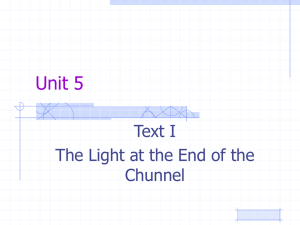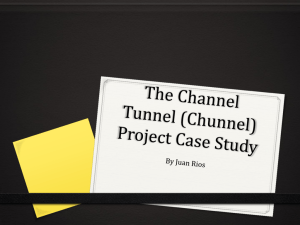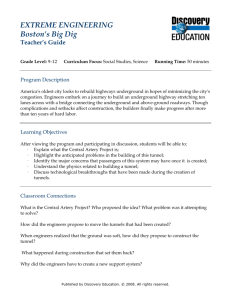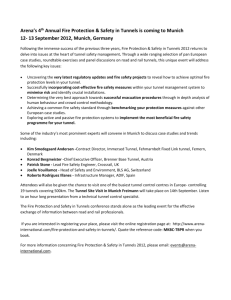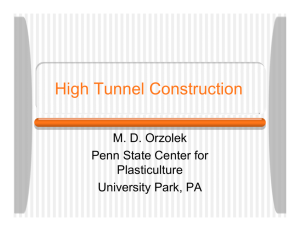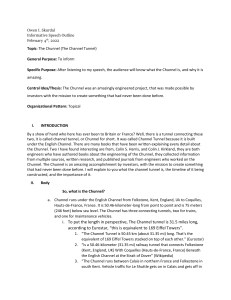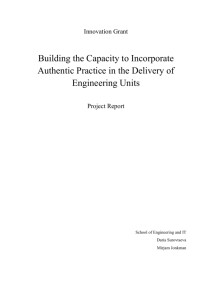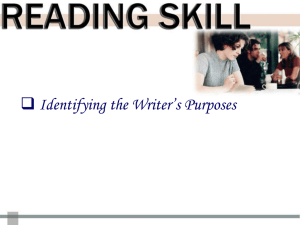The Chunnel
advertisement
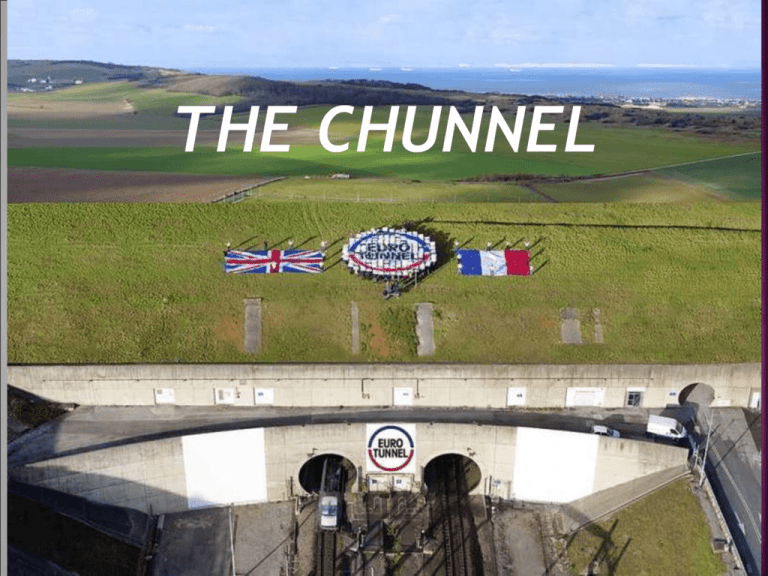
The Channel Tunnel or ‘Chunnel’ is a 32 mile long connection passage located underneath the English Channel Connects Dover, England to Calais, France The modern idea of a tunnel between the two countries dates back to 1802 when Albert Mathieu formally presented the idea after taking a hot air balloon over the channel. His vision was a tunnel with horse-drawn carriages, illuminated with oil lamps At the center of his grand vision was a man made island midchannel for changing horses. The idea was revisited many times during the 1800’s as geologists surveyed the floor of the channel for the ideal place to build a tunnel. In 1881 the Anglo-French Submarine Railway Company began digging on both sides of the channel using the first modern boring machine. The AFRC tunneling experiment proved to be very effective. A nearly 2 km tunnel with a seven foot diameter was created on the English side, while a 1.5 km tunnel was started in France. But cultural issues, political pressure and logistical problems halted this attempt. The idea of the Chunnel continued to be discussed throughout the 20th century But attempts to resume digging were always halted by political fear of strategic disadvantage in war. France and England discussed building the Chunnel to strengthen their alliance after WWI. English scientists later feared that the Germans could attempt to build a Chunnel to invade England during WWII In 1974, almost 30 years after WWII, England and France came to an agreement and construction resumed on both sides of the tunnel. The plan called for two large scale tunnels around a smaller service tunnel. The eventual final design. But in 1975 tunneling was halted again in England. With the English economy struggling, the Labour party didn’t feel such a large scale public project was worth the expense. In 1981 English prime minister Margaret Thatcher and French president Francois Mitterrand agreed to resurrect the project but under the concept that it could only be done as a privately funded project. In February 1986 England and France entered into the Treaty of Canterbury which drew a formal border on the English Channel between the two countries. This treaty was designed to initiate the project. Negative stakeholders, primarily English ferry boat companies, protested and further delayed construction into 1987. BOT: Build Operate and Transfer (after 55 years) http://en.wikipedia.org/wiki/build–operate–transfer English Staging Area French Staging Area Train Door Redesign The Eurotunnel plan was unprecedented. It aimed to use to lessons learned from previous attempts to build the biggest private construction project of all time. Contractors would tunnel from both sides of the channel simultaneously. (32 miles total, 23 miles underwater) They used the survey from the 1881 Anglo-French Railway Company to determine its route through a base of chalk that would hopefully prevent water seepage. It also incorporated the 1975 scheme of 3 tunnels(2 train, 1 service). The Boring Machine Bank Too investment forecast issues many contractors Too many moving parts Two Governments + Financiers June 1988 – Construction Begins in France Dec. 1988 – Construction Begins in England Oct. 30, 1990 – Breakthrough Point July 1991 – All three tunnels complete May 1994 - Dedication July 1994 – Opens to the public Final cost $14.9 Billion Most Expensive Private Construction Project in World History 80% of cost overruns caused by poor planning at inception phase Interest costs through 2013 have pushed the cost over $20 Billion The Chunnel will NOT be profitable in the lifetime of its investors The modern marvel of our lifetime; like the Pyramids in Egypt, the Great Wall of China 31 million people ride it every year - 1000 cars per hour It only takes 3.5 hours to travel from Paris to London The Chunnel may outlive human civilization, proving to future life that we were here Chunnel Video Link References: • • • • • https://www.youtube.com/watch?v=juLq4RyXTAI - 'Modern Marvels' Documentary http://faculty.csuci.edu/minder.chen/project/reading/Chunnel_Project_FTA_Final.pdf http://www.eurotunnel.com/uk/home/ http://raileurope.com/blog/12355-chunnel-facts-london-paris http://www.pbs.org/wgbh/buildingbig/wonder/structure/channel.html http://en.wikipedia.org/wiki/Channel_Tunnel
